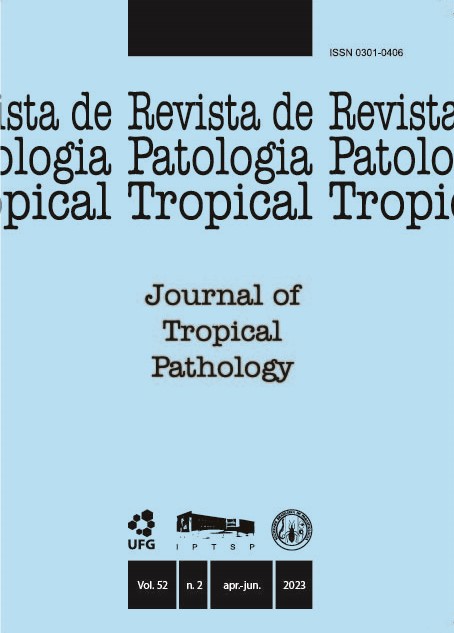Evaluation of the snakebite severity in the brazilian midwest
DOI:
https://doi.org/10.5216/rpt.v52i2.74547Resumo
ABSTRACT
Snakebites are of important public health concern as they can progress in severity and they may cause death, especially in populations with low socioeconomic status or in rural areas of tropical countries. In this retrospective cross-sectional study, we evaluated the clinical-epidemiological profiles of patients admitted for snakebites envenoming at a Reference Hospital in Goiás State, Brazil, from January 2018 to November 2019 with criteria and definitions for venomous accidents notified by the Epidemiological Surveillance Center. Of 326 reported cases, 268 (82.2%) involved Bothrops, 56 (17.9%) involved Crotalus, and 1 (0.3%) involved an elapid. The remaining case (0.3%) was caused by an unidentified snake, as the clinical signs were suggestive of both Bothrops and Crotalus envenomation and the patient received bivalent antivenom serum. Most snakebites occurred in men (n= 252, 77%) and in individuals from rural areas (n= 215, 65.9%). Pain occurred in 315 (96.9%) patients and edema in 274 (84.3%), being more common in the bothropic accidents. In the crotalic accidents, pain occurred in 50 (89.3%) patients and edema in 24 (44.9%). The snakebite severity was considered mild in 107 (32.8%), moderate in 129 (39.8%), and severe in 90 (27.6%) patients. Acute renal injury was the most common systemic complication, occurring in 64 patients (19.9%), while secondary infection was the most important local complication, occurring in 155 (47.5%) patients. Most cases were classified as moderate or severe, probably because our tertiary level hospital service handles with more complex cases. Additionally, a significant number of crotalic accidents had a local presentation, indicating that the venom of snakes in the region has a particular composition.
KEY WORDS: Ophidian envenomation; Crotalus; Bothrops; secondary infection.
Downloads
Downloads
Publicado
Como Citar
Edição
Seção
Licença
The manuscript submission must be accompanied by a letter signed by all authors stating their full name and email address, confirming that the manuscript or part of it has not been published or is under consideration for publication elsewhere, and agreeing to transfer copyright in all media and formats for Journal of Tropical Pathology.

